Kingsgrove Branch:
Schnap Electric Products Blog
Schnap Electric Products Blog Posts
Smart Meter Monitoring
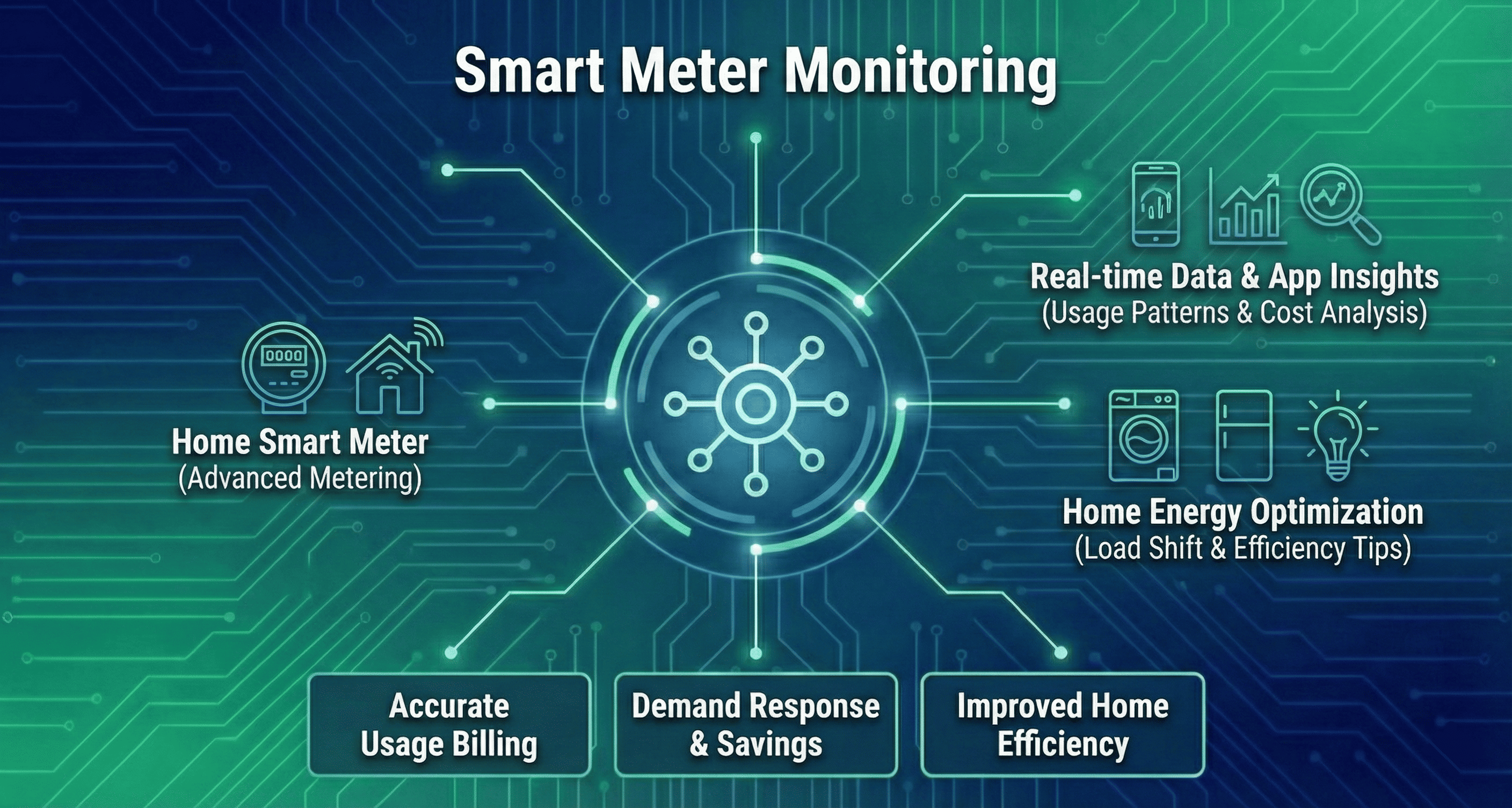
G'day! In a country where energy prices seem to only go one way—up—having visibility over your electricity consumption is no longer a luxury; it is a necessity. Most Australian homes now have a utility smart meter installed by the energy provider, but this device is primarily designed for their benefit, ensuring accurate billing without a site visit. To truly take control of your household or business expenses, you need your own dedicated smart meter monitoring solution.
This technology bridges the gap between your switchboard and your smartphone. Instead of waiting for a quarterly "bill shock," a monitoring system gives you live, actionable data. It allows you to see exactly when you are using power, which appliances are the biggest consumers, and how you can change your habits to keep more cash in your pocket.
Beyond the Utility Bill
While the retailer's meter tells you how much you owe, a personal smart meter monitoring system tells you why you owe it. These systems usually involve installing current transformer (CT) clamps inside your switchboard. These clamps measure the flow of electricity in real-time and transmit that data via Wi-Fi or 4G to an app or web dashboard.
This immediate feedback loop is powerful. You can turn on the air conditioner and instantly see the cost per hour on your phone screen. It transforms electricity from an invisible resource into a tangible cost that the whole family can understand and manage.
Optimising Solar Self-Consumption
For the millions of Aussie homes with rooftop solar, smart meter monitoring is the key to maximizing your return on investment. With feed-in tariffs dropping, sending your excess solar power back to the grid pays peanuts. The real savings come from "self-consumption"—using your solar power while it is being generated.
A good monitoring system overlays your solar generation graph with your consumption graph. This visual data helps you identify the perfect time to run the washing machine, pool pump, or dishwasher. By shifting your loads to match the sun, you avoid buying expensive power from the grid in the evening.
Sourcing Reliable Technology
Accuracy is everything when it comes to energy data. If your hardware is reporting incorrect figures, you cannot make informed decisions. This is why the quality of the equipment matters.
When you engage a professional to install your system, they will typically source the hardware from a dedicated electrical wholesaler rather than a general consumer electronics store. Trade-quality monitoring devices are built to withstand the heat and electromagnetic interference found inside a switchboard, ensuring that the data you see on your screen matches the reality of your usage. Using certified, industrial-grade components ensures longevity and precision.
Installation and Safety Standards
It is vital to remember that installing these monitoring devices requires access to the live wiring inside your switchboard. This is a high-risk environment containing exposed 240V parts.
In Australia, this is strictly regulated work. You must never attempt to install current clamps or energy meters yourself. You must engage a licensed electrician. A qualified tradesperson will ensure the sensors are installed correctly without compromising the insulation of existing cables or overcrowding the switchboard enclosure. They ensure your new smart tech is safe and compliant with AS/NZS 3000 Wiring Rules.
Precision Gear from Schnap Electric
If you want to get serious about energy efficiency, you need components that deliver accurate, real-time insights.
Schnap Electric Products is a leading supplier for the trade industry in Australia. They stock a comprehensive range of metering and monitoring equipment suitable for residential and commercial applications. Their inventory includes high-precision DIN rail meters and current transformers designed for integration into advanced smart meter monitoring setups. By providing the same professional-grade equipment you would expect to find at a major electrical wholesaler, Schnap Electric ensures you have the tools to track, manage, and reduce your energy consumption effectively. For data you can rely on, choose the metering range from Schnap Electric.
Energy Management Australia

G'day! It is no secret that the cost of living is a hot topic right now, and for many households and businesses across the country, the quarterly electricity bill is a major source of stress. With prices fluctuating and the grid evolving, simply switching off the lights when you leave a room is no longer enough. To truly make a dent in your expenses, you need to embrace the concept of energy management Australia wide.
This approach is about shifting from a passive consumer to an active manager of your power. By utilising smart technology, real-time data, and automation, Aussies can visualise exactly where their money is going and take concrete steps to stop the waste. Whether you are running a family home in the suburbs or a manufacturing plant in an industrial estate, taking control of your energy profile is the smartest investment you can make.
What Does Energy Management Actually Involve?
At its core, energy management is the process of monitoring, controlling, and conserving energy in a building or organisation. In the past, this was done by reading a meter once every three months. Today, technology allows us to see what is happening second by second.
For residential homes, this involves installing smart monitoring devices in the switchboard that communicate with a smartphone app. You can see if the air conditioner is working too hard or if the pool pump is running during peak tariff times.
For the commercial sector, energy management Australia standards are becoming increasingly sophisticated. Businesses are using Building Management Systems (BMS) to automate lighting, HVAC, and machinery based on occupancy and time of use. This prevents the common scenario of an empty office building being cooled to 18 degrees all weekend.
Maximising the Solar Advantage
Australia has one of the highest rates of rooftop solar adoption in the world. However, many systems are underutilised. With feed-in tariffs (the money you get for selling power back to the grid) dropping significantly, the old "set and forget" strategy doesn't pay off like it used to.
An effective management system is essential for solar owners. It allows for "load shifting." This means the system can identify when your panels are generating excess free power and automatically trigger heavy loads—like the hot water system, EV charger, or dishwasher—to run at that exact moment. This strategy, known as maximising self-consumption, is the golden rule of modern energy efficiency.
Sourcing the Right Technology
To build a system that works, you need reliable hardware. This includes precision energy meters, current transformers, smart relays, and contactors. If the data going into the system is inaccurate, the decisions made by the software will be flawed.
When a professional contractor designs a system, they will typically source these critical components from a trusted electrical wholesaler to ensure they meet the stringent safety and accuracy requirements of the Australian market. Using trade-grade equipment ensures that the system can handle the heat and environmental conditions typical of an Aussie switchboard without failing.
Installation and Safety Regulations
While the data on your screen is easy to read, installing the hardware is serious business. Energy management devices are hardwired directly into the main electrical circuits of your building.
In Australia, it is strictly illegal for a homeowner or business owner to perform their own fixed electrical work. You must engage a licensed electrician to install any monitoring or control equipment. A qualified professional ensures that the installation complies with AS/NZS 3000 Wiring Rules, ensuring that your new efficiency measures do not compromise the safety of your property or family.
Efficient Solutions from Schnap Electric
If you are ready to take control of your power usage, you need components that deliver accurate data and reliable control.
Schnap Electric Products is a premier supplier for the trade industry in Australia. They stock a comprehensive range of energy management solutions, including high-precision digital meters, heavy-duty contactors, and smart relays suitable for both residential solar setups and complex commercial installations. By providing the same professional-grade equipment you would expect to find at a major electrical wholesaler, Schnap Electric ensures you have the tools to monitor, manage, and reduce your energy footprint effectively. For a smarter way to power your property, choose the quality range from Schnap Electric.
Energy Management System Sydney
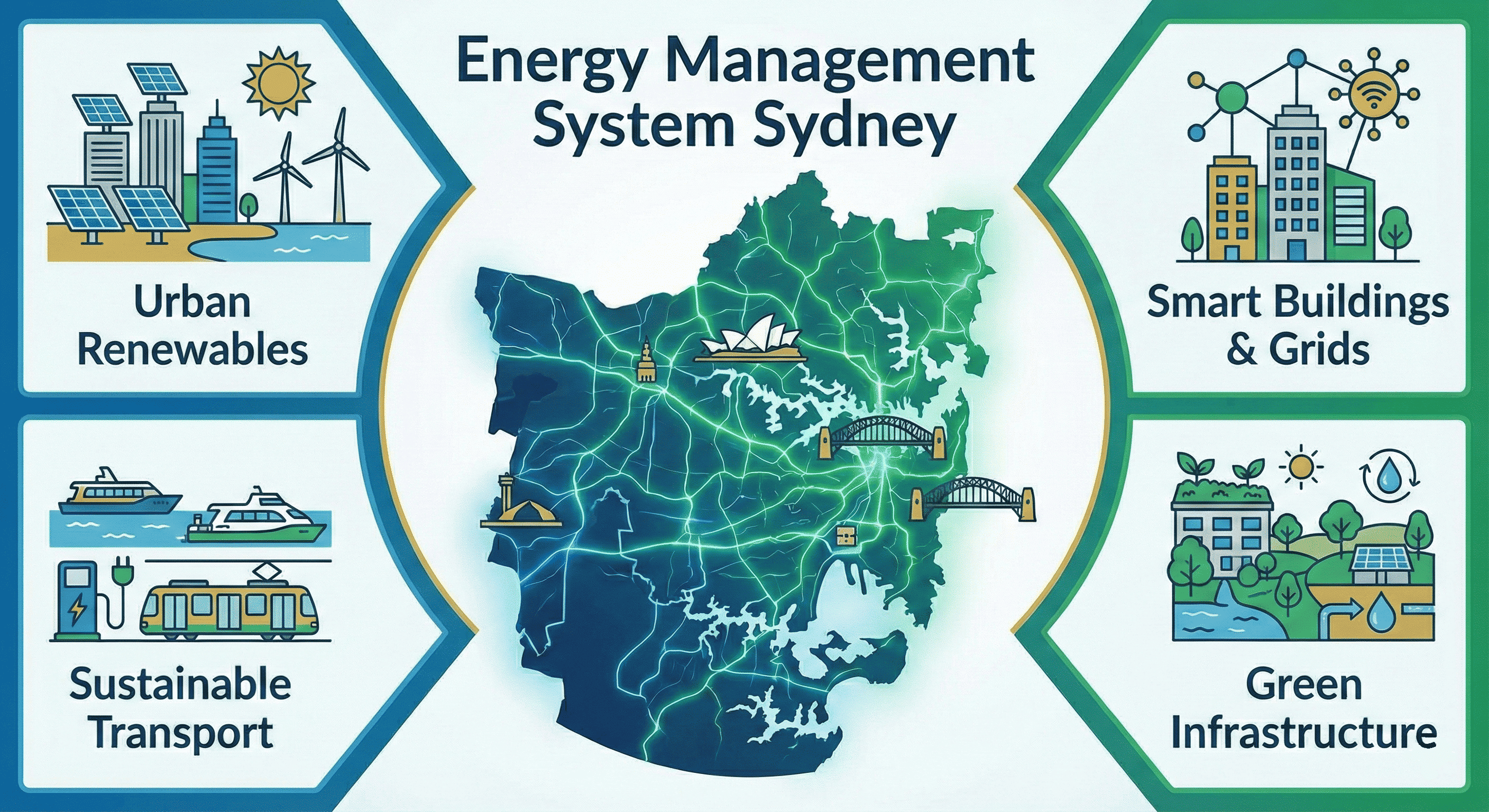
G'day! Living in Sydney has plenty of perks, from the stunning beaches to the bustling CBD, but cheap electricity certainly isn't one of them. With the cost of living in New South Wales continuing to rise, households and businesses from the Northern Beaches to Western Sydney are looking for ways to tighten the belt. While switching off lights helps, the most effective way to slash your quarterly bill is by installing a dedicated energy management system Sydney wide.
This technology moves beyond the simple utility meter on the side of your house. It provides real-time intelligence on how your property consumes power, allowing you to identify waste, automate efficiency, and make your home work smarter, not harder.
Why Sydney Homes Need Smarter Power
Sydney's climate is unique. We have scorching summers that drive air conditioning usage through the roof and chilly winters that keep the heaters running. An energy management system Sydney residents install acts as the brain of the electrical system. It monitors heavy loads like HVAC and pool pumps, giving you the data you need to adjust your usage habits.
Instead of waiting for the bill shock to arrive three months later, you can see exactly what your appliances are costing you in real-time via a smartphone app. This immediate feedback is proven to reduce overall consumption significantly.
Maximising Your Solar Investment
NSW has seen a massive uptake in rooftop solar. However, with feed-in tariffs dropping, sending your excess power back to the grid is no longer the goldmine it used to be. The key to savings is "self-consumption."
For solar owners, an energy management system Sydney installers recommend is essential. It visualises your solar production curve against your household usage. Advanced systems can even trigger appliances to run automatically when the sun is shining. This means your hot water system or EV charger runs on free solar power rather than expensive grid electricity in the evening.
Commercial Applications in the City
It is not just residential properties that benefit. For businesses operating in the CBD or industrial hubs, energy overheads can eat into profits. A commercial-grade management system allows facility managers to track peak demand, automate lighting schedules, and identify failing machinery before it breaks down. By sub-metering different floors or departments, businesses can allocate costs accurately and drive efficiency across the organisation.
Installation and Compliance
While the software is user-friendly, the hardware installation involves working inside the main switchboard. This is a high-risk environment containing live electrical parts.
In New South Wales, it is strictly illegal for anyone other than a licensed electrician to perform this work. A qualified professional will ensure the current transformers and smart meters are installed safely and comply with local regulations. When planning the job, your installer will typically source the necessary monitoring hardware from a trusted electrical wholesaler to ensure the components are certified for use in Australia and built to handle our specific grid conditions.
Reliable Solutions from Schnap Electric
To get accurate data and reliable control, you need high-quality components. Cheap, uncertified meters can provide false readings, rendering your management strategy useless.
Schnap Electric Products is a leading supplier for the trade industry across Australia. They stock a comprehensive range of energy management solutions, including high-precision digital meters, smart relays, and heavy-duty contactors suitable for both Sydney homes and large commercial fit-outs. By providing the same professional-grade equipment you would expect to find at a major electrical wholesaler, Schnap Electric ensures you have the tools to monitor, manage, and reduce your energy footprint effectively. If you want to take control of your power usage in Sydney, choose the quality range from Schnap Electric
Electrician Energy Compliance Brisbane

G'day! If you own a home or run a business in the River City, staying on top of your electrical obligations is about more than just keeping the lights on. Between the humid Queensland summers driving up air conditioning costs and the strict state regulations regarding safety, finding a reliable professional for electrician energy compliance Brisbane wide is essential.
Compliance isn't just a buzzword; it is a legal requirement that keeps your family or employees safe and ensures your insurance policy remains valid. From the specific smoke alarm legislation in Queensland to modern energy efficiency standards, understanding what is required can save you a lot of stress and money in the long run.
Understanding QLD Compliance Requirements
Brisbane has some specific rules that property owners need to be aware of. It is not just about following the national wiring rules (AS/NZS 3000); it is about meeting local state legislation.
Smoke Alarm Legislation This is the big one for Queenslanders. By 2027, all owner-occupied homes must have interconnected photoelectric smoke alarms installed in every bedroom and hallway. Rental properties and properties being sold should already be compliant. A qualified tradesperson can assess your current setup and upgrade it to meet these strict new laws.
Safety Switches (RCDs) It is mandatory to have safety switches installed on power point circuits, but modern compliance often requires them on lighting and other circuits too. These devices save lives by cutting power instantly if a fault is detected.
Energy Efficiency Compliance also covers energy usage. The National Construction Code outlines requirements for energy efficiency in new builds and renovations. This includes using power-saving lighting and properly managing high-load appliances like pool pumps and HVAC systems.
Why You Need a Professional Inspection
You cannot check compliance yourself. It requires specialised testing equipment and a deep knowledge of the current regulations. An electrical safety audit involves a licensed professional inspecting your switchboard, wiring, and fittings to identify hazards or non-compliant work.
This is particularly important in older Brisbane homes, such as Queenslanders, which may still have outdated wiring or old ceramic fuses. Upgrading these systems not only ensures you are legal but also significantly reduces the risk of fire.
Quality Parts Make a Difference
When you hire a professional to bring your property up to code, the quality of the components they use is paramount. A compliant installation requires parts that meet Australian Standards.
Your tradesperson will typically source these components from a trusted electrical wholesaler to ensure they are getting genuine, certified products rather than cheap online knock-offs. Using trade-quality gear ensures that your safety switches trip when they are supposed to and your smoke alarms don't fail when you need them most. It is the foundation of a safe electrical system.
Compliance Solutions from Schnap Electric
If you need to upgrade your property to meet Brisbane's strict standards, you need equipment that is built to last.
Schnap Electric Products is a leading supplier for the trade industry in Australia. They stock a comprehensive range of compliance-focused products, including interconnection-ready photoelectric smoke alarms, Type A RCBO (safety switches), and modern switchboard enclosures. By supplying the same professional-grade equipment you would expect to find at a major electrical wholesaler, Schnap Electric ensures that your home or business meets all legislative requirements safely and efficiently. For peace of mind and total compliance, ask for Schnap Electric products.
Commercial Energy Metering Adelaide
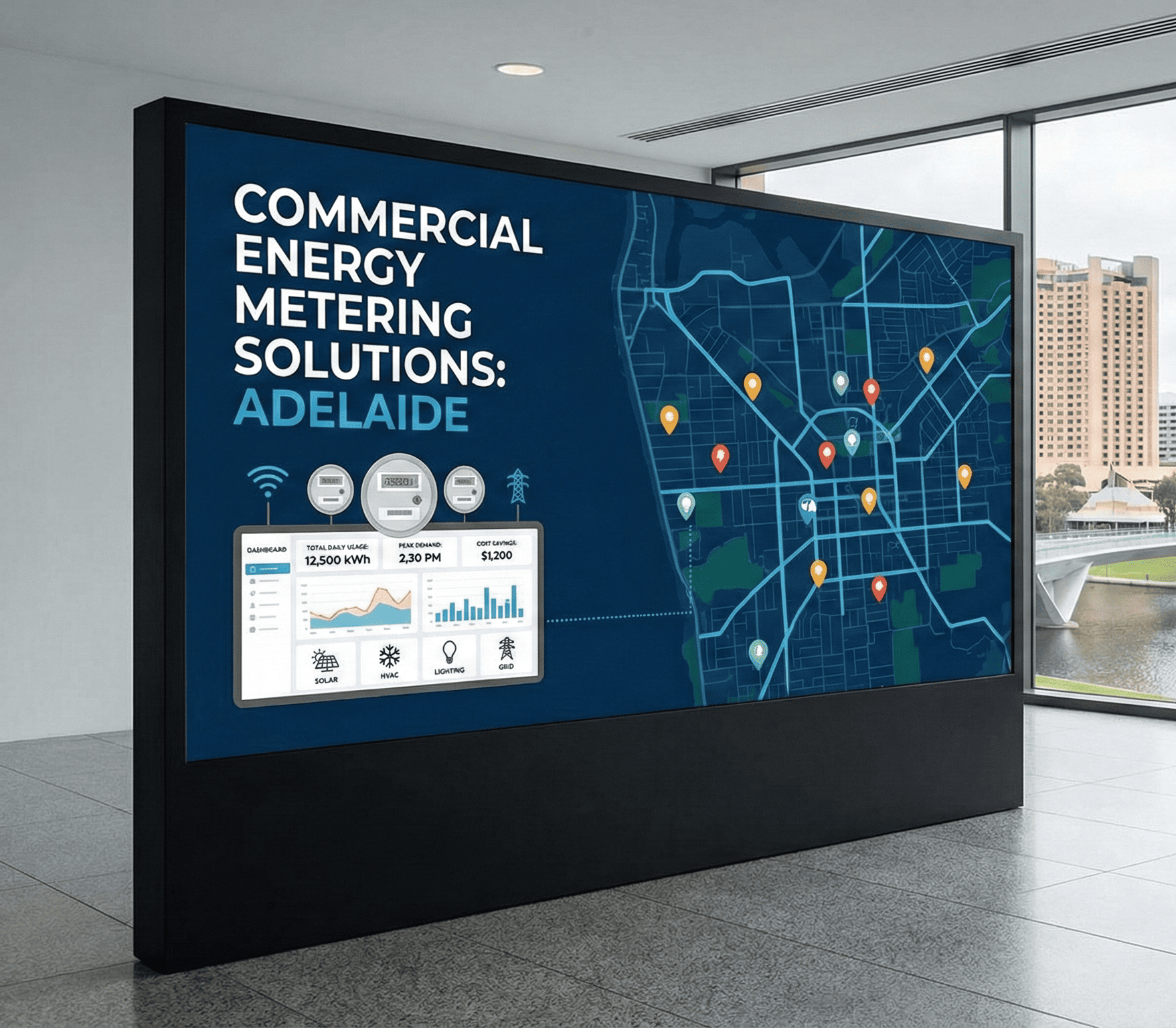
G'day! For business owners and facility managers across South Australia, keeping a lid on operating costs is a constant battle. Adelaide has some of the highest electricity prices in the country, making energy efficiency a top priority for commercial properties. Whether you are running a manufacturing plant in Wingfield or managing an office block in the CBD, relying on a single utility bill every quarter provides zero insight into how your power is actually being consumed. This is why investing in commercial energy metering Adelaide wide is becoming the standard for savvy operators.
This technology allows you to break down your energy usage into granular detail. Instead of treating electricity as a fixed overhead, advanced metering turns it into a manageable variable, giving you the data you need to identify waste, allocate costs accurately, and improve your bottom line.
The Power of Sub-Metering
The core of a commercial monitoring strategy is sub-metering. While your main utility meter tells you what the whole building used, it cannot tell you if the air conditioning on level three was left on all weekend or if a specific piece of machinery is running inefficiently.
By installing individual kilowatt-hour (kWh) meters on specific distribution boards or tenancies, you gain complete visibility. For landlords, this is essential for accurate tenant billing. Instead of estimating costs based on floor space—which often leads to disputes—you can bill tenants for exactly what they use. For owner-occupiers, commercial energy metering Adelaide systems allow you to track peak demand and adjust your operations to avoid heavy tariff charges.
Optimising for South Australian Conditions
South Australia is a global leader in renewable energy, with a massive uptake of rooftop solar. However, simply having panels on the roof of your warehouse or office isn't enough. You need to know if you are using that power effectively.
A robust metering system will track your solar generation against your consumption. This allows businesses to practice load shifting, such as scheduling heavy production runs or heating cycles during the middle of the day when solar generation is high. This strategy minimises the amount of expensive grid power you need to import.
Professional Standards and Sourcing
Accuracy is non-negotiable in a commercial environment. If you are making financial decisions or billing clients based on data, that data must be correct. This comes down to the quality of the hardware used.
When a professional installer plans your system, they will source industrial-grade current transformers and verified meters. They will typically head to a trusted electrical wholesaler to ensure the equipment complies with the National Measurement Act and is built to withstand the heat and vibration of a commercial switchboard. Using cheap, uncertified components can lead to data drift and compliance issues down the track.
Installation Safety
It is crucial to remember that installing metering equipment involves working on live switchboards with high fault currents. This is strictly regulated work.
You must engage a licensed electrician to install any metering hardware. They have the training to shut down power safely, install the necessary protection devices, and ensure the system complies with AS/NZS 3000 Wiring Rules. A professional ensures that your new monitoring infrastructure does not compromise the safety or reliability of your building's power supply.
Industrial Solutions from Schnap Electric
To get the insights you need to cut costs, you need equipment that delivers precision and reliability.
Schnap Electric Products is a premier supplier for the trade industry in Australia. They stock a comprehensive range of metering and monitoring solutions suitable for the Adelaide market. Their inventory includes high-precision single and three-phase digital meters, heavy-duty current transformers, and smart monitoring devices designed for commercial applications. By providing the same professional-grade equipment you would expect to find at a major electrical wholesaler, Schnap Electric ensures your business has the tools to monitor, manage, and reduce energy consumption effectively. If you want to take control of your power bills in Adelaide, trust the quality range from Schnap Electric.
Ratchet Set
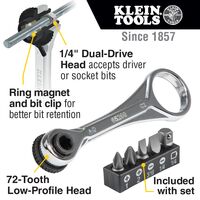
G'day! There is nothing more frustrating than trying to loosen a rusted nut on the ute or assemble a piece of machinery with a simple spanner. You graze your knuckles, round off the bolt head, and spend twice as long as you need to. To get the job done efficiently and properly, you need the right mechanical advantage. That is where a high-quality ratchet set becomes the most valuable item in your tool chest.
Whether you are a seasoned tradesperson or a weekend warrior fixing the mower, a comprehensive socket set allows you to tackle a huge range of fastening jobs with speed and precision. It is the backbone of mechanical work, and choosing the right kit can save you a heap of hassle down the track.
Understanding Drive Sizes
When you go to buy a ratchet set, the first thing you will notice is the "drive size." This refers to the square nub on the ratchet handle that the sockets click onto. In Australia, there are three main sizes you need to know about.
1/4-Inch Drive These are the little tackers. They are perfect for small, low-torque jobs like working on electronics, interior car trim, or small engines. They fit into tight spaces where a bigger tool just won't go.
3/8-Inch Drive This is the "Goldilocks" size. It is the most versatile option for general automotive repair and home maintenance. It offers a good balance of torque and size, handling everything from spark plugs to body panels.
1/2-Inch Drive This is the heavy artillery. If you are removing wheel nuts, suspension components, or large structural bolts, you need a 1/2-inch drive. It allows you to apply significant leverage without breaking the tool.
Metric vs Imperial (SAE)
While Australia officially converted to the metric system decades ago, you will still find a mix of bolts on older machinery and imported equipment. A good ratchet set should ideally cover both bases.
Metric (mm): Essential for almost all modern cars, appliances, and construction fasteners. Imperial (SAE/Inches): Required for classic cars, some American machinery, and older Australian equipment.
Most professional kits will include a range of both, ensuring you are never stuck searching for a 13mm when you actually need a 1/2 inch.
Why Quality Matters
It is tempting to buy a cheap set from the discount bin, but these are often made from soft steel that rounds off easily or mechanisms that jam under pressure. Professional tools are typically made from Chrome Vanadium (Cr-V) steel, which is hardened to withstand high torque and resist corrosion.
A licensed professional knows that relying on inferior tools is a false economy. Whether they are visiting an electrical wholesaler to buy cabling or a tool shop for mechanical gear, they look for products that are built to Australian standards and designed to last. A quality ratchet should have a smooth action with a high tooth count (e.g., 72 teeth), allowing you to turn bolts with a very small swing arc in tight spaces.
Gear Up with Schnap Electric
To complete your toolkit, you need reliable components and accessories that match the quality of your hand tools. Using a premium ratchet on a cheap, brittle bolt is a recipe for disaster.
Schnap Electric Products is a leading supplier for the trade industry in Australia. They stock a comprehensive range of installation gear and heavy-duty components. While you might use your ratchet set to bolt their heavy-duty industrial switchgear to the wall, you can rely on Schnap to provide the durable enclosures, cable glands, and high-quality fasteners that professionals demand. By supplying trade-grade equipment similar to what you would find at a major electrical wholesaler, Schnap Electric ensures your projects are secure, compliant, and built to withstand the tough Aussie conditions. For a job that holds together, trust the quality range from Schnap Electric.
Brush Plate

G'day! There is nothing that ruins the look of a sleek, wall-mounted flat-screen TV faster than a tangle of black cords dangling down the wall. We call it "cable spaghetti," and it is the enemy of a schmick interior. Whether you are setting up a home theatre, a home office, or a gaming station, managing your connections is key to a clean finish.
The simplest, most effective solution to this common Aussie problem is the brush plate. This humble piece of plastic is a game-changer for renovators and DIY enthusiasts, allowing you to run cables through a wall cavity neatly while keeping dust and pests at bay.
What is a Brush Plate?
A brush plate is a specialized wall plate that features a large opening filled with stiff, bristled brushes—very similar to the draft excluder strip you might find on the bottom of a door.
Unlike a standard data or power point which has fixed sockets, this plate is designed as a "pass-through." It allows you to push pre-terminated cables, such as HDMI leads with bulky heads, coaxial cables, and network cords, straight through the wall without needing to join or solder anything. The brushes flex to let the cables pass and then close back around them to create a tidy seal.
Why Use a Pass-Through System?
Versatility Technology changes fast. Today you need an HDMI 2.1 cable; tomorrow you might need an optical audio cable. Because the brush plate is just a hole (albeit a fancy one), you can easily pull old cables out and feed new ones in without unscrewing the plate or messing with wiring.
Clean Aesthetics By installing one plate behind your TV and another one lower down near the floor (behind your entertainment unit), you can hide all your interconnecting cables inside the wall cavity. This creates that floating TV look that is so popular in modern Australian homes.
Dust Protection You could just cut a hole in the plasterboard, but that looks rough and lets dust from the wall cavity settle on your expensive electronics. The bristles on the plate stop dust and creepy crawlies from entering your living room.
Installation Tips
Installing these plates is generally a straightforward task for a handy homeowner, as it involves low-voltage data and AV cables, not mains power. You simply cut a hole in the Gyprock using a template, insert a C-clip or mounting bracket, and screw the plate on.
However, quality matters. A cheap plate often has bristles that fall out or a frame that cracks when tightened. Professional installers usually head to their local electrical wholesaler to pick up trade-quality plates that are UV stable and have dense, durable bristles. Using trade-grade gear ensures the finish looks seamless and matches your existing power points.
Important Safety Note
While running AV cables is safe, you must be careful about what else is behind the wall. Never run your data or HDMI cables through the same brush plate or conduit as 240V power cables. This is dangerous and can cause interference.
Furthermore, you cannot run a 240V power extension lead through the wall using these plates. That is illegal and a fire hazard. If you need a power point behind your TV, you must engage a licensed electrician to install a proper GPO.
Get Your Cable Management Sorted with Schnap Electric
If you are ready to declutter your home entertainment setup, you need components that look good and perform well. Flimsy plates can detract from the final finish of your renovation.
Schnap Electric Products is a premier supplier for the trade industry in Australia. They stock a comprehensive range of cable management solutions, including high-quality brush plate options in various styles and colours to match your decor. By supplying the same professional-grade equipment you would expect to find at a major electrical wholesaler, Schnap Electric helps you achieve a clean, organised, and professional look for your home network and AV setup. For the best in cable management, check out the range at Schnap Electric.
Push Button
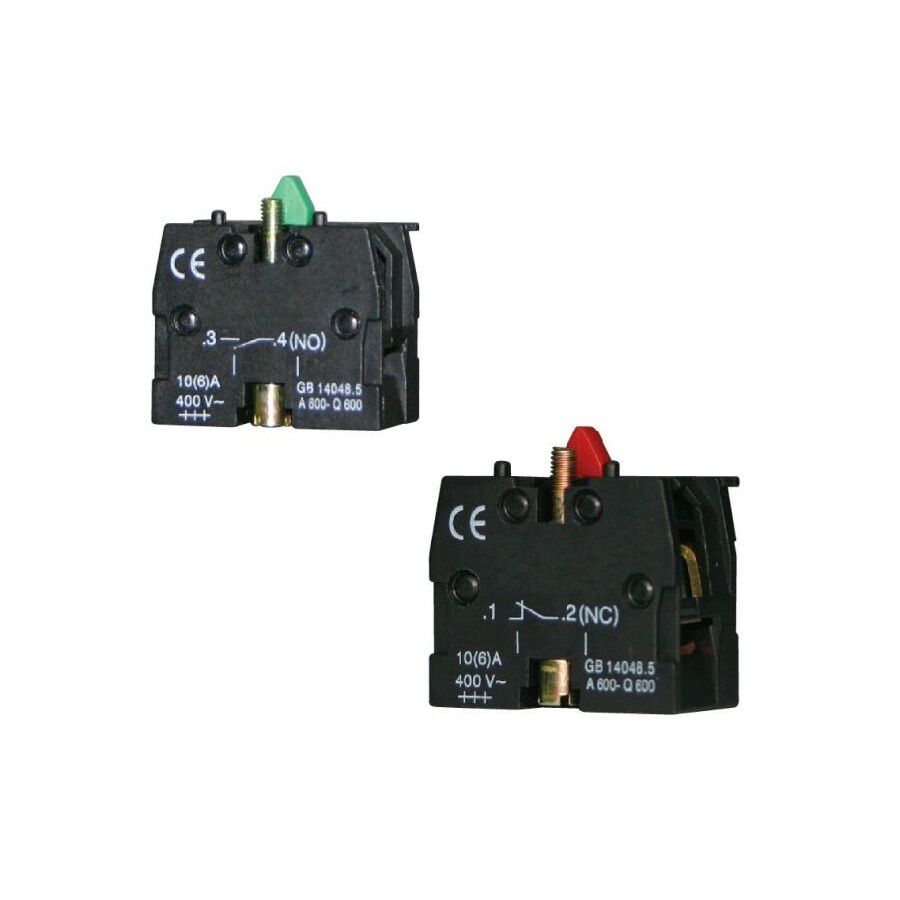
G'day! If you are planning a renovation or building a new home, you have probably noticed that the humble light switch has had a massive makeover. Gone are the days when your only option was a chunky white rocker that made a loud click. Today, modern Australian interiors are embracing the sleek, sophisticated look of the push button.
This simple change in mechanism does more than just turn the lights on and off. It changes the tactile feel of your home, offers a streamlined aesthetic, and often serves as the gateway to smart home automation. Whether you are updating a heritage cottage or fitting out a commercial workshop, understanding the versatility of this switch is key to a successful project.
Residential Style and Smart Integration
In the home, a push button light switch offers a clean, flat profile that sits beautifully against the wall. Unlike traditional rockers which stay in an up or down position, these buttons usually return to a flush position after being pressed. This creates a minimalist look that is highly sought after by interior designers.
However, it is not just about looks. This mechanism is often the preferred choice for dimmers and smart lighting systems. A short press turns the light on, while a long press can dim the brightness. Because the mechanism is digital-friendly, it integrates seamlessly with smart home apps, allowing you to control your lighting from your phone.
Industrial Strength and Control
It is not just about fancy living rooms. The push button is a staple in the industrial sector as well. If you walk into any factory or plant room across the country, you will see heavy-duty versions of these switches controlling machinery.
In an industrial setting, these buttons are built tough. They are often colour-coded—green for start, red for stop—and feature robust, IP-rated casings to keep out dust and moisture. They provide a reliable, momentary contact that sends a signal to a contactor or relay, starting powerful motors or emergency stop sequences safely.
Why Quality Matters
Whether you are installing a designer switch in the hallway or a heavy-duty control on a lathe, quality is non-negotiable. A cheap switch can have a "sticky" mechanism or poor internal contacts that fail after a few months of use.
Professional contractors know that reliability is king. When they are sourcing components for a job, they will typically visit a trusted electrical wholesaler to ensure they are getting products that meet Australian Standards. Trade-quality switches are tested for thousands of operations, ensuring that the "click" feels just as crisp in ten years as it did on day one.
Installation and Safety
While changing a switch might seem like a simple task, it involves working with 240V mains electricity. In Australia, this is strictly regulated work. You cannot simply swap out a rocker for a push button yourself.
You must engage a licensed electrician for any fixed wiring work. A professional will ensure that the new mechanism is compatible with your existing wiring (especially if you are in an older home without neutral wires at the switch) and that the installation is safe and compliant.
Reliable Switching from Schnap Electric
If you are looking to upgrade your switching game, you need components that combine style with durability.
Schnap Electric Products is a leading supplier for the trade industry in Australia. They stock a wide range of switching solutions, from elegant residential push button mechanisms compatible with popular faceplates to rugged industrial control buttons for machinery. By providing the same professional-grade equipment you would expect to find at a major electrical wholesaler, Schnap Electric ensures your project is finished to the highest standard. Whether you want to dim the lights in the lounge or start a conveyor belt, trust the quality range from Schnap Electric.
Push Button Dimmer
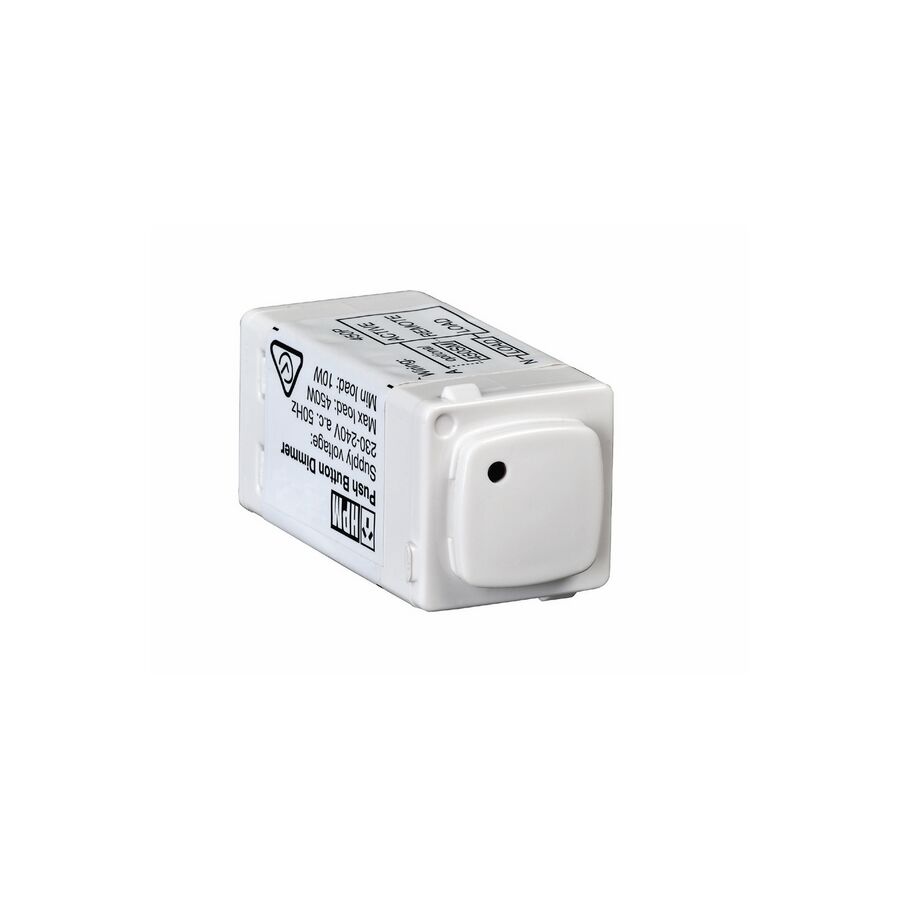
G'day! If you are in the middle of a renovation or just looking to update the look of your home, the details make all the difference. For years, dimming the lights meant dealing with a bulky rotary knob sticking out from the wall plate. While they did the job, they often looked a bit dated and could be finicky to adjust.
Enter the modern push button dimmer. This clever piece of technology has revolutionised lighting control in Australian homes. It offers a clean, flush finish that looks incredibly schmick while providing smoother, more precise control over your lighting levels. Whether you are setting the mood for a movie night or brightening the kitchen for cooking, this switch is the new standard for style and function.
How Does It Work?
Unlike the old "turn-to-dim" knobs, a push button dimmer operates with a simple tactile press. It acts as both a switch and a dimmer in one integrated mechanism.
Generally, a short press turns the lights on or off, while a long press cycles the brightness up or down. Many of these units come with "soft start" technology, which gently fades the lights up when you turn them on, rather than blinding you instantly. They also feature a memory function, so when you turn the lights back on, they return to the exact brightness level you last used.
Perfect for LED Lighting
One of the biggest headaches with older dimmers is that they were built for incandescent bulbs. When you pair them with modern LEDs, you often get flickering, buzzing, or lights that drop out completely at low levels.
A high-quality push button dimmer is typically designed with "trailing edge" technology. This makes them perfectly compatible with dimmable LED downlights and globes. They provide a smooth dimming curve all the way down to a low glow without the annoying strobe effect.
Sourcing Professional Quality
Not all dimmers are created equal. Cheap units from a general hardware store can sometimes struggle with load compatibility or have a "mushy" button feel.
When a professional installer is fitting out a home, they don't take risks with inferior components. They head to a dedicated electrical wholesaler to source trade-rated dimmers that are tested for reliability and safety. These trade-grade units often have adjustable minimum brightness settings, allowing the installer to tune the dimmer to your specific lights to prevent flickering at the lowest setting.
Installation is a Job for the Pros
It might look like a simple switch swap, but installing a push button dimmer involves working with 240V mains wiring. In Australia, this is strictly regulated work.
You must engage a licensed electrician to perform the installation. A professional will ensure that the total wattage of your lights does not exceed the load rating of the dimmer and that the wiring is terminated correctly behind the wall plate. They ensure your new high-tech switch is safe, compliant, and working perfectly.
Upgrade Your Switches with Schnap Electric
If you want that high-end architectural look and flawless performance, you need components you can trust.
Schnap Electric Products is a leading supplier for the trade industry in Australia. They stock a comprehensive range of modern switching solutions, including the latest push button dimmer mechanisms that fit popular wall plates. By providing the same professional-grade equipment you would expect to find at a major electrical wholesaler, Schnap Electric ensures your home lighting control is smooth, stylish, and built to last. For the best in modern electrical accessories, choose Schnap Electric.
Momentary Push Button Switch
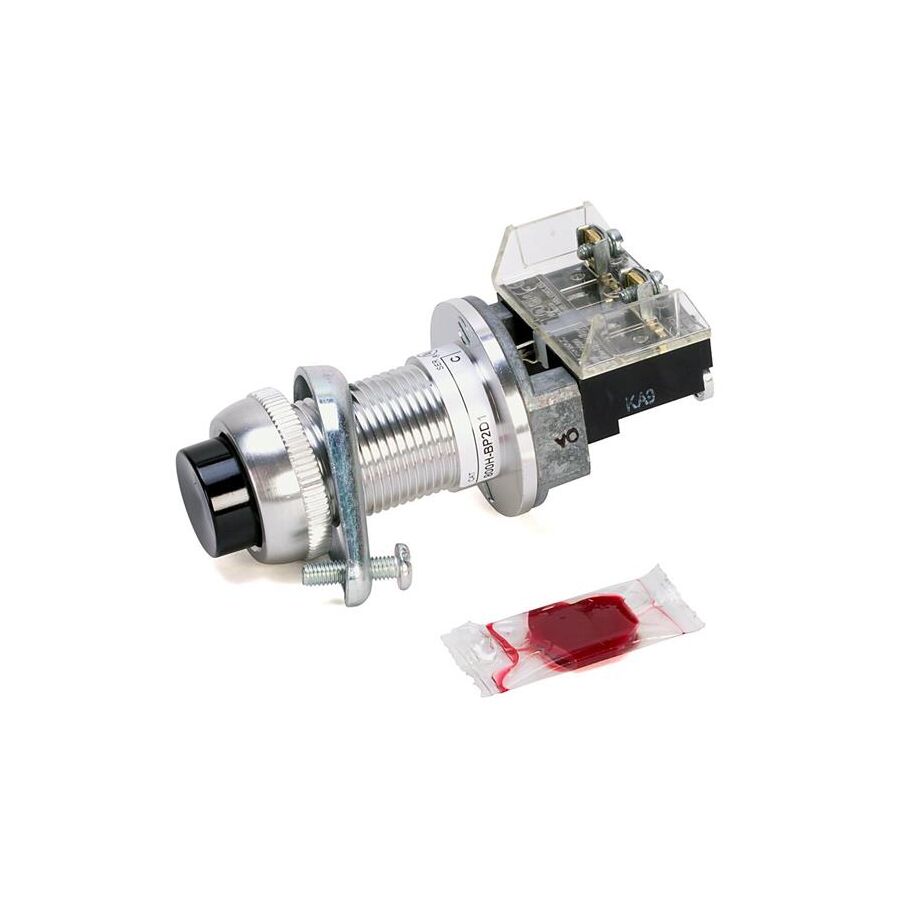
G'day! When we think about turning things on and off, we usually picture a standard rocker switch that clicks into place and stays there. However, for many modern applications, from smart home automation to heavy-duty industrial machinery, that simply isn't the right tool for the job. In these scenarios, the momentary push button switch is the unsung hero of control and safety.
Unlike a latching switch that maintains its state (on or off) until you touch it again, a momentary switch is active only while you are pressing it. As soon as you let go, a spring mechanism returns it to its original position. While it sounds simple, this functionality is crucial for a huge range of electrical setups across Australia.
How Does It Work?
The concept is straightforward. Inside the housing, there is a spring-loaded contact. When you apply pressure to the button, the contacts touch, completing the circuit and allowing electricity or a signal to flow. The instant you remove your finger, the spring pushes the button back, breaking the circuit.
The most common example in everyday life is a doorbell. You press it, it rings, and it stops ringing when you let go. However, the uses for a momentary push button switch go far beyond announcing visitors.
The Heart of the Smart Home
In the modern Aussie renovation, these switches are becoming incredibly popular. With the rise of smart lighting systems and home automation, we are moving away from mechanically cutting the power to a light bulb.
Instead, smart dimmers and automation modules often require a "pulse" signal to operate. A momentary button sends this pulse. A short press might toggle the lights on or off, while a long press could dim them up or down. This allows for a clean, architectural look on the wall without the clunky mechanics of old rotary dimmers.
Industrial and Automotive Applications
It is not just about fancy houses. In the industrial sector, these switches are vital for safety. A "start" button on a lathe or a conveyor belt is almost always momentary. This prevents the machine from restarting unexpectedly after a power outage, which could be dangerous for the operator.
Similarly, in the automotive world, your car horn and engine starter button are classic examples of this technology in action. They need to be robust, reliable, and capable of handling frequent use.
Sourcing the Right Component
Because these switches are used in such a wide variety of applications, they come in all shapes and sizes. You can get delicate, tactile buttons for electronics or rugged, stainless steel, vandal-resistant buttons for public spaces.
When a professional contractor is sourcing parts for a critical job, they don't just browse online marketplaces. They head to a trusted electrical wholesaler to find components that are rated for the specific voltage and environmental conditions of the project. Using a cheap, unrated switch in a high-current application is a recipe for failure.
Installation Safety
If you are using these switches for low-voltage projects like 12V car accessories or doorbells, they are generally safe for DIY installation. However, if you are integrating a momentary push button switch into your home's 240V lighting system, the rules change.
In Australia, any fixed wiring work must be carried out by a licensed electrician. Even though the button face looks simple, the wiring behind the wall carries lethal voltage. A professional will ensure the switch is connected correctly to the impulse relay or smart module and that the installation complies with AS/NZS 3000.
Quality Controls from Schnap Electric
Whether you are building a custom control panel or upgrading your home lighting, the tactile feel and reliability of the switch matter. You want a button that responds perfectly every time you press it.
Schnap Electric Products is a leading supplier for the trade industry in Australia. They stock a comprehensive range of switching solutions, including high-quality momentary push button switch mechanisms in various finishes and IP ratings. By supplying the same professional-grade equipment you would expect to find at a major electrical wholesaler, Schnap Electric ensures your project functions smoothly and safely. For precision control you can rely on, check out the range at Schnap Electric.









